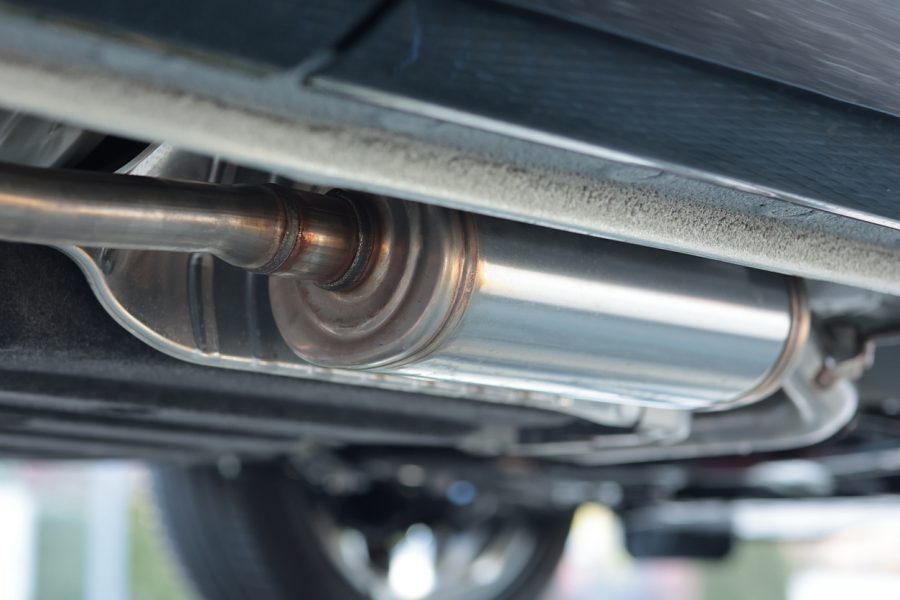
Catalytic converter theft continues to be a problem around the UK. The Centre for Infrastructure and Asset Protection (CIAP) claims thieves stole 2,254 catalytic converters – also known as cats ‑ in March 2022, up by 11 per cent from February.
The CIAP, with backing from the police, now wants to roll out its SmartWater marking for cats nationwide so that more drivers can benefit from it. We look at how drivers can stop crooks making off with this valuable part of their car’s exhaust system.
How can you stop your catalytic converter being stolen?
There are a couple of ways to ensure your car and its catalytic converter don’t fall prey to thieves.
SmartWater is the easiest
This is a liquid that’s invisible to the naked eye. It contains a code that shows up beneath an ultraviolet light. The benefit of SmartWater is that it’s very simple to apply. And according to the company behind it, scientists only need a spec of the solution to identify where a marked item came from. Stickers on the car warn criminals that the anti-theft device has been used.
Toyota, whose cars along with sister brand Lexus have been particularly targeted by crooks, has been working with the police. It has set up a National Database of Catalytic Converters. The aim is to help identify stolen catalytic converters and if possible, pin them to specific crimes.
In May 2021, Lexus GB revealed that it would be marking 100,000 catalytic converters with SmartWater. It has also given police 20,000 SmartWater kits to support anti-cat theft initiatives.
And police would like to make the SmartWater scheme nationwide so that vulnerable cars can have their cats marked during their MOT or servicing.

Locking devices are the most secure
You can also buy devices that lock the catalytic converter to the car. They are a stainless-steel cage that envelops the cat making it very difficult to steal.
The company Catloc claims to provide bespoke devices for up to 50 models of car. These include major manufacturers such as Ford, Vauxhall, Volkswagen, Toyota and Honda. The devices cost slightly more than £100, although Toyota and Lexus dealers are subsidising the price.
And while you might think this is expensive, having a new catalytic converter will cost in excess of £1,000.
How do they steal catalytic converters?
All the thieves have to do is get under the car with an angle grinder and cut the section of the exhaust pipe containing the catalytic converter out. More organised thieves will use a trolley jack to make the job easier. According to London’s Metropolitan Police, properly prepared professional thieves can remove a cat in under a minute.
Why are catalytic converters stolen?
Catalytic converters contain precious metals such as platinum, palladium and rhodium. Crooks then extract these from the stolen cats and sell them to unlicensed scrap dealers for large sums of money.
The cats from petrol-electric hybrid cars are most in demand because they tend to be cleaner than those from petrol or diesel cars. In turn that makes it easier to retrieve the precious metals. Older hybrids are a more popular target for thieves because their cats tended to use the precious metals in larger quantities.

What is a catalytic converter?
The catalytic converter is a device located in the exhaust system of internal combustion engine cars. It is designed to remove noxious gases that result from the engine burning petrol or diesel. Every car sold in Europe since 1993 must have one of these devices installed.
As exhaust gases pass through the cat, a chemical reaction turns poisonous emissions such as carbon monoxide and nitrogen oxide into harmless carbon dioxide and nitrogen.
The catalytic converter needs heat to operate efficiently. To manage this, many are in the exhaust system close to the engine. That makes replacing them expensive because the car needs an entirely new exhaust system.
You don’t always have to change the hole system as several are bolted on. Also OE cats are available without going to a main dealer and cost less money